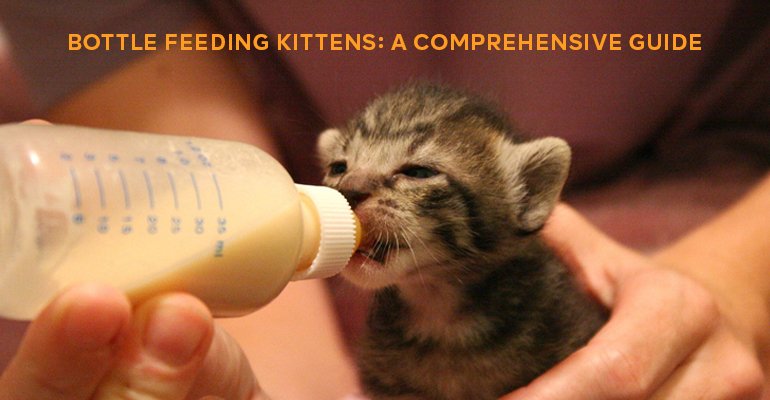Bottle Feeding Kittens: A comprehensive Guide
There are instances where cat lovers and vets find abandoned kittens on the road which have been separated from their families due to some misfortune and are in need of help. In such cases, one is required to possess proper information in order to ensure the overall safety of the innocent animals that are dependent on us and expect us to take the right decision.
According to vets and experts, one of the most important aspects which one should be well informed about to tackle the situation effectively is the process of bottle feeding kittens.
Look at How One can Go About Bottle Feeding Kittens:
1. Ensure that you have a bottle with an uncut nipple: It is important to have a bottle with an untouched nipple initially to ensure that the formula is being provided to the cat effectively. One can even opt to purchase a bottle with an uncut nipple if it is not available at home. Having purchased one, a hole should be cut in a calculated manner on the cap of the bottle so that the formula can slowly drip out of it without spilling over and disturbing the poor kitten.
2. Take into consideration the health of the kitten: It is important to ensure that the kitten is in a position suitable for feeding before starting the process of bottle feeding. The temperature of the kitten needs to be in a stable position for the consumption to take place effectively. One should practice caution if the kitten is extremely cold or hot. A cleft palate and inability to swallow are the other indications that the kitten is not fit physically for undertaking the strain involved in the exercise.
One can even assess the capability of the kitten to swallow the solution effectively by placing a single drop of the formula on its tongue and further touching the cat’s throat. If the cat seems fit and in a stable condition, then one is advised to go ahead to the next step involved.
3. Purchase Kitten Formula to provide nourishment to the kitten: Certain pet lovers enjoy this misconception that it is safe to provide cow’s milk to an average kitten as nourishment to provide sufficient energy. However, this is not the case with vets advocating cat parents to never feed dairy products, cow’s milk to a kitten as it will affect his body in an extremely negative manner. A kitten formula purchased from a pet supply store should be refrigerated according to the instructions of the manufacturer. One should always make sure that the formula is warm, fresh and free of any clump.
4. Providing the solution to the kitten: The kitten’s comfort is paramount in such a sensitive situation as one wrong decision could prove fatal. The kitten should be laid down in a belly-down pose with the head held stable. The nipple should be inserted gently within the mouth of the kitten ensuring the proper flow of the formula. It is not advised to attempt to accelerate the process in such a situation as it could lead to aspiration. One can even attempt to gently urge a cat to eat by rubbing the face with a cloth or toothbrush which can help create the feel of a mother cat’s tongue on the body ensuring comfort.
5. Ending the Process Positively and Efficiently: Once the solution has been administered, it is advisable to wipe away any formula spilled on the face with the use of a baby wipe. A kitten can develop moist dermatitis or even a crusty face resulting in the fur falling out, which makes cleanliness all the more important. On a closing note, one should stimulate the kitten to excrete any waste material from the body before finally placing the kitten in a comfortable spot.
It is paramount to ensure that the kitten is able to ingest the solution in a proper manner before continuing with the dosage rather than pouring constantly which can cause more harm than good. Considering this, let’s take a look at some of the do’s and don’ts involved in bottle feeding kittens:
Do’s- It is recommended to undertake the following measures while indulging in the process of bottle feeding kittens:
- The bottle should be held at an angle of 45-degrees.
- The nipple, as well as the bottle, should be sterilized after every single feed.
- The liquid’s temperature should be monitored to ensure that it is comfortable for the kitten during the administration of the solution.
Don’ts- At the same time, there are certain actions which need to be avoided for ensuring that the kitten is able to benefit wholly from the process:
- Be careful enough to not overfeed the kitten because he may be unable to digest the quantities at a young age.
- Do not open the nipple on the bottle any bigger than necessary.
- Ensure that the kitten is not lying on his back at any cost.
An average pet lover should take into the consideration the following recommendations and warnings while undertaking the process of bottle feeding kittens. The process if executed properly could prove invaluable for the health of the young kitten.




